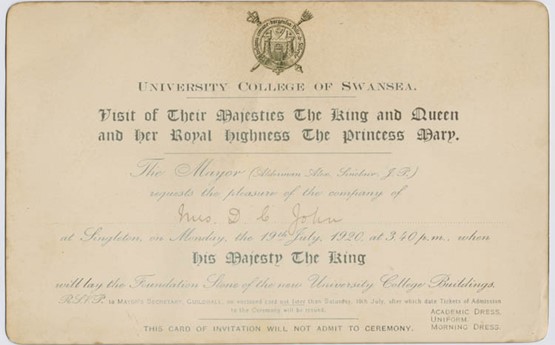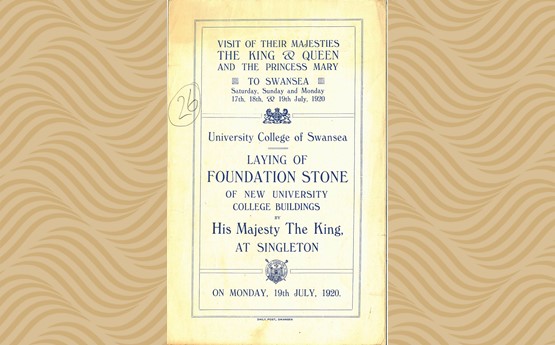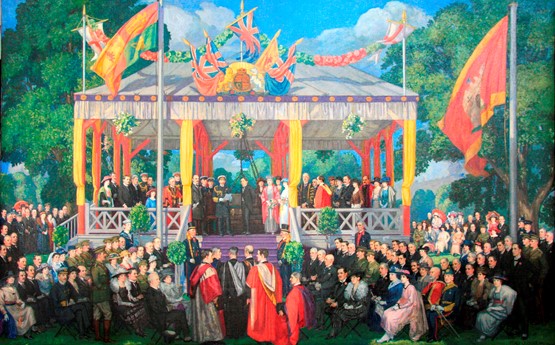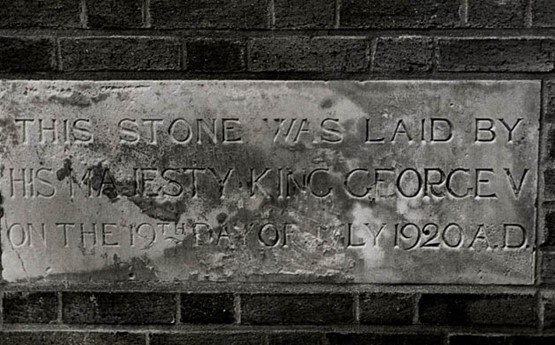On the afternoon of Monday 19 July 1920, King George V and his wife Queen Mary arrived at Singleton Park to lay the foundation stone of the University College of Swansea. A grand ceremony was held to mark the occasion, with many notable figures from the University movement, as well as the great and the good of the town and the region, gathering in the park to witness this moment. The scene is depicted in a large painting by Percy Gleaves, the restored version of which is on display in Singleton Abbey.
In July 1920, there was still some uncertainty as to where and how the new College would operate in the coming autumn and the stone did not stay where the King had put it. It only found a permanent home when it was built into the wall of the 1937 Library – the first purpose-built and permanent university building on the Singleton site.
Laying the foundation stone, King George V said:
'It gives me special pleasure to lay the Foundation Stone of the new building for a University College in Wales...It will be the task of your College to send out into the world men and women, fully equipped for the material work which awaits them, and with minds attuned to high ideal, opened to the rich and varied interests of modern life, and steadfastly set towards the service of their fellows.'
On the University’s 100th birthday in 2020, Charles, Prince of Wales, made reference to his great-grandfather’s words when he gave a short address to congratulate the University on its centenary.
Before 1920, there were three other Colleges that made up the University of Wales. They were located in Aberystwyth, Bangor and Cardiff. It was obvious that a new College was needed in the Swansea region, specifically to meet the scientific and technical needs of this important industrial area. Hence, when the University opened in 1920, it taught science and engineering subjects in that first year, although arts subjects began in the following year.
Filmed footage of the Ceremony can be viewed here.
The material is courtesy of the Richard Burton Archives, Swansea University





